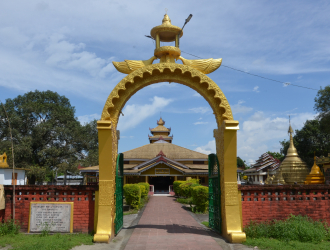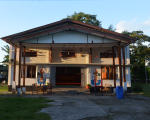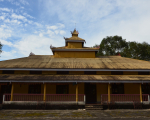Theravada, considered the oldest doctrine of Buddhism, was bought to Arunachal Pradesh by the Buddhist groups of Myanmar during the medieval period. The southeastern region of the state where the Burmese groups are now settled is rich with Theravada Buddhist art; several Theravada viharas are spread across this region with every Theravada Buddhist village having its own monastery.
The society and culture of the Theravada Buddhist community of Arunachal Pradesh is deeply connected to the monasteries and its prayer halls. Because Theravada Buddhism upholds the practice of donations, making offerings to the monastery is a part and parcel of everyday life of the community. From daily meals of the monks residing in these monasteries to construction and maintenance of the monastic structures, everything depends on the alms provided by the villagers. Donating artefacts to the monastery is mandatory for the devotee’s religious merit making, and may include premade objects like idols and paintings of the Buddha and the subsidiary deities, or commissioned constructions like stupas, shrines and large-scale statues.
The art and architecture of the Theravada monasteries of Arunachal Pradesh evidence the continuation of traditional designs in parallel to adaption of new techniques and styles. The practice of religious merit making of the community by offering artefacts to their monasteries has resulted in the vibrant Theravada Buddhist artistic tradition of Arunachal Pradesh. This photoessay traces the Theravada artistic tradition developing in Arunachal Pradesh, the easternmost periphery of India and among the least discovered and discussed region of the country. With an aim to present a glimpse of the rich world of this Theravada Buddhist art, this photoessay documents the architecture of the various monastic structures, the sculptures, paintings and decorative repertories of five monasteries situated in the Namsai and Changlang districts of Arunachal Pradesh.














